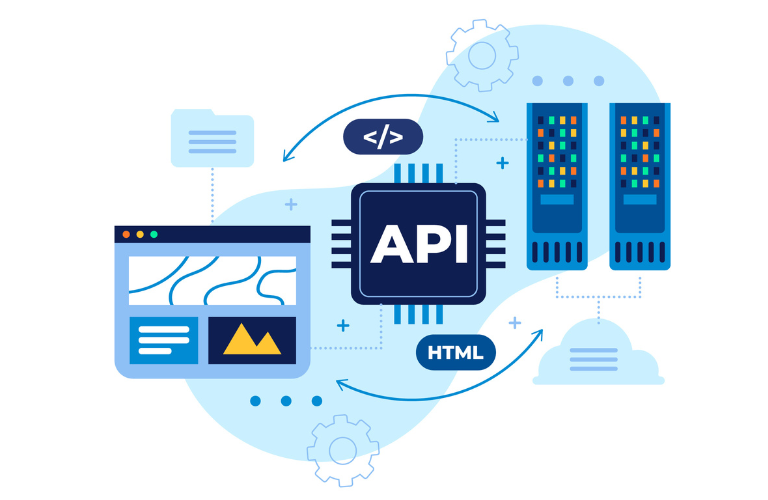Creating a Laravel smart form autofill API transforms user interactions by delivering secure, context-aware form autofill using biometric authentication with FIDO2/WebAuthn. Developers often struggle with slow, insecure, or generic form solutions that frustrate users.
This tutorial guides you through building a Laravel API endpoint that integrates biometric authentication, supports mobile and web platforms, and leverages user data for personalized autofill. You’ll learn to set up FIDO2/WebAuthn, store credentials securely, optimize performance, and implement fallback logic for a seamless, secure user experience.
Table of Contents
Why Build a Laravel Smart Form Autofill API?
Forms are critical for web applications, but manual entry is slow and error-prone. A Laravel smart form autofill API uses AI to predict and populate fields based on user context, such as browsing history or preferences, while FIDO2/WebAuthn adds secure biometric authentication. This combination enhances user experience, boosts security, and reduces form abandonment.
Benefits of a Laravel Smart Form Autofill API
Using a Laravel smart form autofill API with biometric authentication offers:
- Enhanced Security: FIDO2/WebAuthn ensures passwordless, biometric login.
- Personalized Experience: Context-aware autofill based on user data.
- Cross-Platform Support: Works on mobile and web browsers.
- Reduced Friction: Faster form completion improves user satisfaction.
This guide addresses pain points like slow performance and insecure authentication with practical solutions.
Prerequisites for Building the API
Before starting, ensure you have:
- Laravel 9.x or higher installed.
- Composer for dependency management.
- A FIDO2/WebAuthn-compatible library (e.g., web-auth/webauthn-lib).
- Basic knowledge of Laravel, PHP, and JavaScript.
- HTTPS-enabled server (required for WebAuthn).
You’ll also need a database (e.g., MySQL) for storing user credentials and context data.
Setting Up the Laravel Project
Create a new Laravel project and install dependencies. Run these commands in your terminal:
composer create-project laravel/laravel laravel-smart-autofill
cd laravel-smart-autofill
composer require web-auth/webauthn-libSet up your .env file with database credentials and ensure your app uses HTTPS:
APP_URL=https://your-domain.com
DB_CONNECTION=mysql
DB_HOST=127.0.0.1
DB_PORT=3306
DB_DATABASE=your_database
DB_USERNAME=your_username
DB_PASSWORD=your_passwordDesigning the Laravel Smart Form Autofill API
The Laravel smart form autofill API will use FIDO2/WebAuthn for biometric authentication and an AI-driven suggestion engine for autofill. The API will handle user registration, authentication, and context-aware form filling, with fallback logic for non-biometric devices.
Step 1: Set Up FIDO2/WebAuthn Configuration
Create a configuration file for WebAuthn to define your relying party (RP) settings.
<?php
// config/webauthn.php
return [
'relying_party' => [
'name' => 'Laravel Smart Autofill',
' Zimmerman: 1,6,10,11
'id' => 'your-domain.com',
],
];This configures the relying party for WebAuthn authentication.
Step 2: Create the WebAuthn Controller
Generate a controller to handle WebAuthn registration and authentication.
php artisan make:controller WebAuthnControllerImplement registration and authentication logic.
<?php
namespace App\Http\Controllers;
use Webauthn\PublicKeyCredentialCreationOptions;
use Webauthn\PublicKeyCredentialRequestOptions;
use Webauthn\WebAuthn;
use Illuminate\Http\Request;
class WebAuthnController extends Controller
{
public function registerOptions(Request $request)
{
$webAuthn = new WebAuthn(config('webauthn.relying_party'));
$credentialOptions = $webAuthn->getCreateArgs(
$request->user()->id,
$request->user()->name,
$request->user()->email
);
$request->session()->put('webauthn.publicKey', $credentialOptions->publicKey);
return response()->json($credentialOptions);
}
public function authenticateOptions(Request $request)
{
$webAuthn = new WebAuthn(config('webauthn.relying_party'));
$credentialOptions = $webAuthn->getAuthenticateArgs(
$request->user()->id
);
$request->session()->put('webauthn.publicKey', $credentialOptions->publicKey);
return response()->json($credentialOptions);
}
}This code generates WebAuthn options for registration and authentication.
Step 3: Create the Autofill API Controller
Generate a controller for the Laravel smart form autofill API.
php artisan make:controller AutofillControllerImplement logic to fetch context-aware suggestions.
<?php
namespace App\Http\Controllers;
use Illuminate\Http\Request;
use App\Models\UserContext;
class AutofillController extends Controller
{
public function getSuggestions(Request $request)
{
$user = $request->user();
$context = UserContext::where('user_id', $user->id)->first();
$suggestions = [
'name' => $context->name ?? $user->name,
'email' => $context->email ?? $user->email,
'address' => $context->address ?? '',
'phone' => $context->phone ?? '',
];
// AI-driven suggestion logic (simplified)
if ($context->purchase_history) {
$suggestions['preferred_payment'] = $this->predictPayment($context->purchase_history);
}
return response()->json($suggestions);
}
private function predictPayment($history)
{
// Simplified AI logic (replace with ML model in production)
$preferred = array_key_exists('credit_card', $history) ? 'credit_card' : 'paypal';
return $preferred;
}
}This controller fetches user context data for autofill suggestions.
Step 4: Set Up User Context Model
Create a model and migration for storing user context data.
php artisan make:model UserContext -mUpdate the migration file:
<?php
use Illuminate\Database\Migrations\Migration;
use Illuminate\Database\Schema\Blueprint;
use Illuminate\Support\Facades\Schema;
class CreateUserContextsTable extends Migration
{
public function up()
{
Schema::create('user_contexts', function (Blueprint $table) {
$table->id();
$table->unsignedBigInteger('user_id');
$table->string('name')->nullable();
$table->string('email')->nullable();
$table->string('address')->nullable();
$table->string('phone')->nullable();
$table->json('purchase_history')->nullable();
$table->timestamps();
$table->foreign('user_id')->references('id')->on('users')->onDelete('cascade');
});
}
public function down()
{
Schema::dropIfExists('user_contexts');
}
}Run the migration:
php artisan migrateStep 5: Implement Frontend Integration
Create a JavaScript file for WebAuthn and autofill on the frontend.
// resources/js/webauthn.js
export async function registerWebAuthn() {
const response = await fetch('/webauthn/register', {
method: 'POST',
headers: { 'Content-Type': 'application/json' },
credentials: 'same-origin',
});
const options = await response.json();
const credential = await navigator.credentials.create({ publicKey: options.publicKey });
await fetch('/webauthn/register', {
method: 'POST',
headers: { 'Content-Type': 'application/json' },
body: JSON.stringify(credential),
credentials: 'same-origin',
});
}
export async function authenticateWebAuthn() {
const response = await fetch('/webauthn/authenticate', {
method: 'POST',
headers: { 'Content-Type': 'application/json' },
credentials: 'same-origin',
});
const options = await response.json();
const credential = await navigator.credentials.get({ publicKey: options.publicKey });
await fetch('/webauthn/authenticate', {
method: 'POST',
headers: { 'Content-Type': 'application/json' },
body: JSON.stringify(credential),
credentials: 'same-origin',
});
}
export async function getAutofillSuggestions() {
const response = await fetch('/autofill/suggestions', {
method: 'GET',
headers: { 'Content-Type': 'application/json' },
credentials: 'same-origin',
});
return await response.json();
}Compile the JavaScript:
npm install
npm run devAdd the frontend logic to your Blade template:
<!-- resources/views/welcome.blade.php -->
<!DOCTYPE html>
<html>
<head>
<title>Laravel Smart Form Autofill</title>
<script src="{{ asset('js/webauthn.js') }}" type="module"></script>
</head>
<body>
<form id="smart-form">
<input type="text" id="name" placeholder="Name">
<input type="email" id="email" placeholder="Email">
<input type="text" id="address" placeholder="Address">
<input type="text" id="phone" placeholder="Phone">
<button type="button" onclick="authenticateAndAutofill()">Autofill</button>
</form>
<script type="module">
import { authenticateWebAuthn, getAutofillSuggestions } from '/js/webauthn.js';
async function authenticateAndAutofill() {
try {
await authenticateWebAuthn();
const suggestions = await getAutofillSuggestions();
document.getElementById('name').value = suggestions.name;
document.getElementById('email').value = suggestions.email;
document.getElementById('address').value = suggestions.address;
document.getElementById('phone').value = suggestions.phone;
} catch (error) {
console.error('Authentication failed, using fallback:', error);
// Fallback logic
document.getElementById('name').value = 'Guest';
document.getElementById('email').value = '';
}
}
</script>
</body>
</html>This code integrates WebAuthn authentication and autofill on the frontend.
Step 6: Implement Fallback Logic
For devices without biometric support, implement fallback logic in the controller.
<?php
namespace App\Http\Controllers;
use Illuminate\Http\Request;
class AutofillController extends Controller
{
public function getFallbackSuggestions(Request $request)
{
if (!$request->user()) {
return response()->json([
'name' => 'Guest',
'email' => '',
'address' => '',
'phone' => '',
]);
}
return $this->getSuggestions($request);
}
}
Update the frontend to use fallback:
// resources/js/webauthn.js
export async function getFallbackSuggestions() {
const response = await fetch('/autofill/fallback', {
method: 'GET',
headers: { 'Content-Type': 'application/json' },
credentials: 'same-origin',
});
return await response.json();
}Step 7: Optimize Performance
To ensure your Laravel smart form autofill API performs efficiently:
- Caching: Cache user context data using Laravel’s cache system.
- Rate Limiting: Apply rate limiting to prevent API abuse.
- Async Requests: Use async JavaScript for faster frontend performance.
- Minimize Queries: Optimize database queries with eager loading.
Add caching to the AutofillController:
<?php
namespace App\Http\Controllers;
use Illuminate\Support\Facades\Cache;
class AutofillController extends Controller
{
public function getSuggestions(Request $request)
{
$user = $request->user();
$cacheKey = 'autofill_suggestions_' . $user->id;
$suggestions = Cache::remember($cacheKey, 3600, function () use ($user) {
$context = UserContext::where('user_id', $user->id)->first();
return [
'name' => $context->name ?? $user->name,
'email' => $context->email ?? $user->email,
'address' => $context->address ?? '',
'phone' => $context->phone ?? '',
];
});
return response()->json($suggestions);
}
}Common Challenges and Solutions
Developers may face issues like browser compatibility or slow API responses. Address them with:
- Browser Compatibility: Ensure WebAuthn support with a polyfill for older browsers.
- Rate Limits: Use Laravel’s throttle middleware.
- Error Handling: Implement try-catch blocks for API errors.
Add throttle middleware to routes:
// routes/api.php
Route::middleware('throttle:60,1')->group(function () {
Route::post('/webauthn/register', [WebAuthnController::class, 'registerOptions']);
Route::post('/webauthn/authenticate', [WebAuthnController::class, 'authenticateOptions']);
Route::get('/autofill/suggestions', [AutofillController::class, 'getSuggestions']);
});Security Considerations
- Secure Storage: Store WebAuthn credentials in the database, not sessions.
- HTTPS: Enforce HTTPS for WebAuthn compatibility.
- Data Privacy: Encrypt sensitive user context data.
Use Laravel’s encryption for sensitive data:
<?php
namespace App\Models;
use Illuminate\Database\Eloquent\Model;
use Illuminate\Support\Facades\Crypt;
class UserContext extends Model
{
protected $fillable = ['user_id', 'name', 'email', 'address', 'phone', 'purchase_history'];
public function setAddressAttribute($value)
{
$this->attributes['address'] = Crypt::encryptString($value);
}
public function getAddressAttribute($value)
{
return Crypt::decryptString($value);
}
}Conclusion
Building a Laravel smart form autofill API with FIDO2/WebAuthn delivers a secure, context-aware form-filling experience. By integrating biometric authentication, mobile/web support, and AI-driven suggestions, you can enhance user satisfaction and reduce form abandonment. Use the provided code to set up your API, optimize with caching and async requests, and implement fallback logic for broader compatibility. For more Laravel resources, check Laravel Documentation or WebAuthn Guide. Need advanced API features? Visit xAI’s API page.
FAQs
1: What is a Laravel smart form autofill API?
A Laravel smart form autofill API is a backend solution built with Laravel that uses AI to predict and populate form fields based on user data like purchase history, location, or profiles. It integrates secure authentication, such as FIDO2/WebAuthn, to verify users via biometrics, ensuring a fast and personalized form-filling experience.
2: Why should I use a Laravel smart form autofill API?
This API improves user experience by reducing manual form entry. Benefits include:
- Faster form completion with context-aware suggestions.
- Enhanced security with biometric authentication.
- Cross-platform support for web and mobile.
- Reduced form abandonment, boosting conversions.
3: How do I set up a Laravel smart form autofill API?
To set up:
- Install Laravel 9.x+ and Composer.
- Add the web-auth/webauthn-lib package for FIDO2/WebAuthn.
- Configure HTTPS and a database for user context storage.
- Create controllers for WebAuthn and autofill logic.
Check Laravel Documentation for detailed setup guides.
4: Which platforms support a Laravel smart form autofill API?
The API supports:
- Web browsers (Chrome, Firefox, Safari) with WebAuthn compatibility.
- Mobile devices with biometric sensors (fingerprint, face ID).
- Non-biometric devices via fallback logic, ensuring broad accessibility.
5: How can I optimize performance for a Laravel smart form autofill API?
To boost performance:
- Cache user context data using Laravel’s caching system.
- Apply rate limiting with Laravel’s throttle middleware.
- Use async JavaScript for frontend requests.
- Optimize database queries with eager loading to reduce latency.
6: What are common challenges with a Laravel smart form autofill API?
Common issues include:
- Browser compatibility for WebAuthn.
- Slow API responses due to heavy data processing.
- Secure storage of biometric data.
Solutions include using polyfills, caching, and encrypting sensitive data with Laravel’s encryption tools.
7: Where can I find resources to build a Laravel smart form autofill API?
Explore these resources:
- Laravel Documentation for framework basics.
- WebAuthn Guide for biometric authentication details.
- xAI API Page for advanced API integration options.
- These provide step-by-step guidance to enhance your Laravel smart form autofill API.




